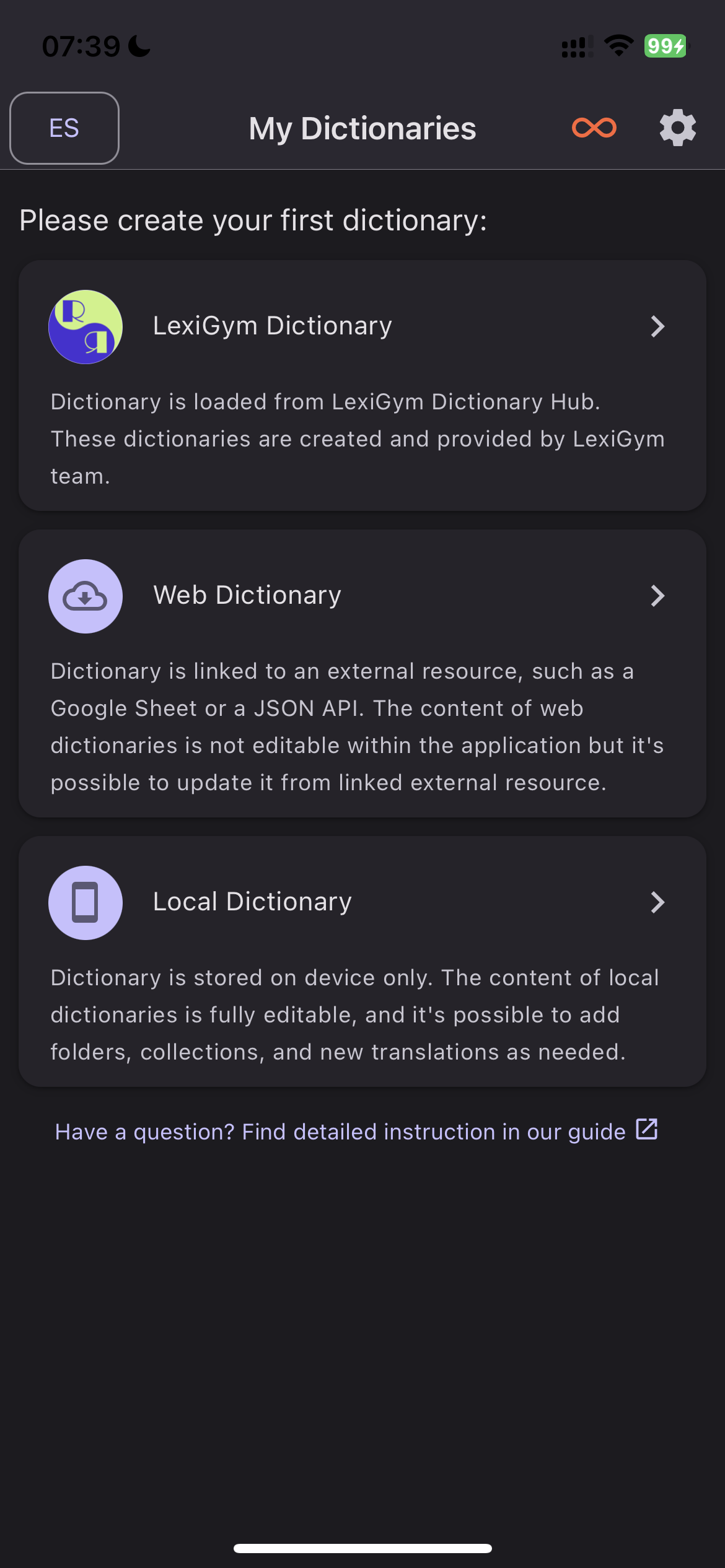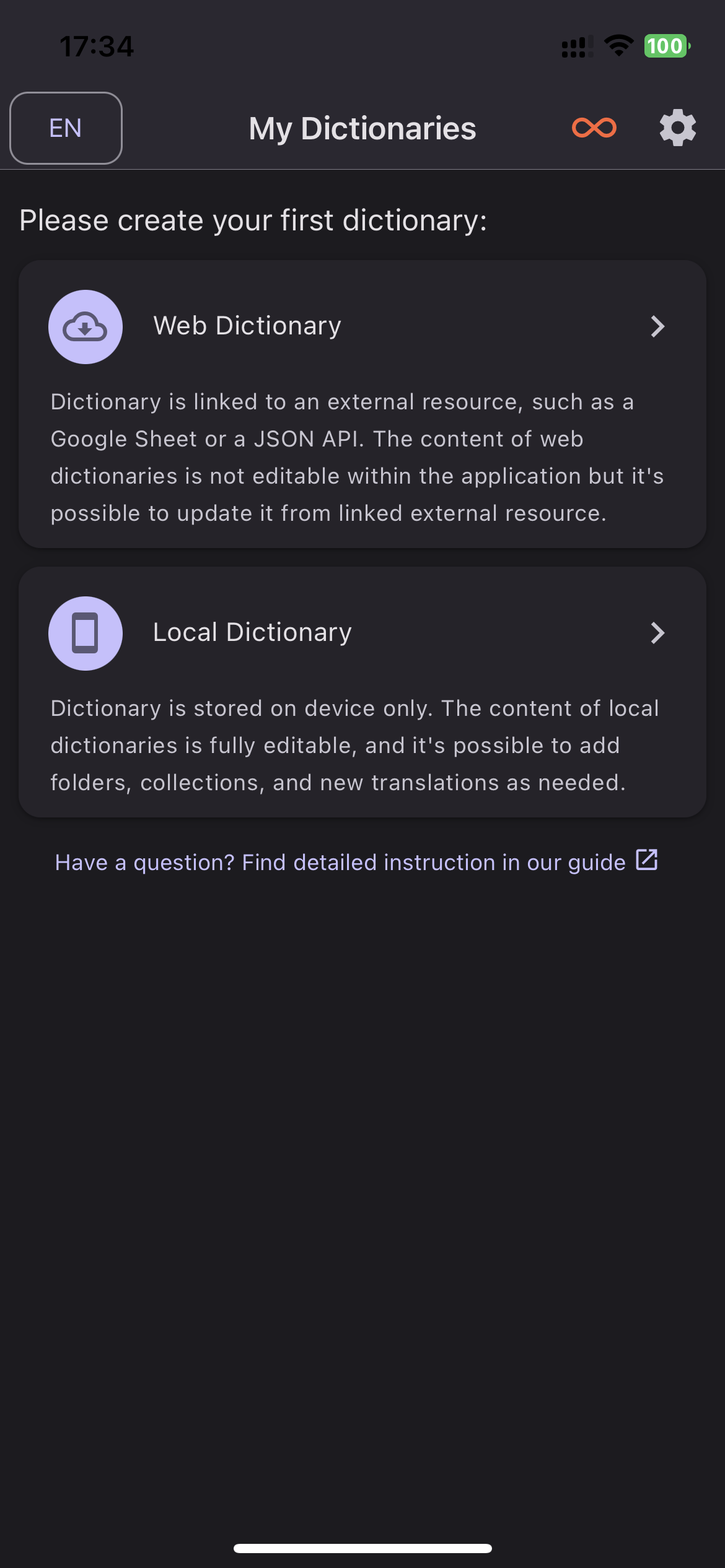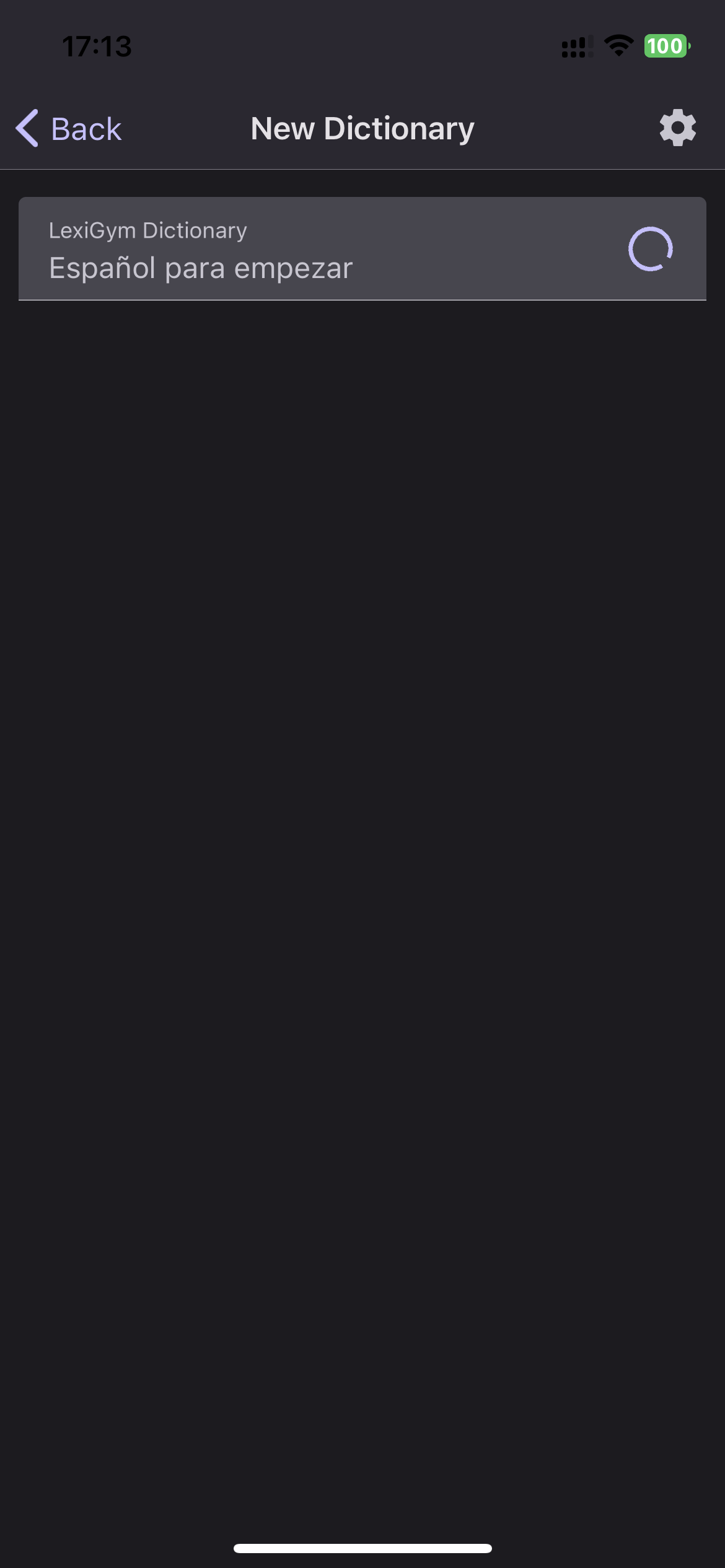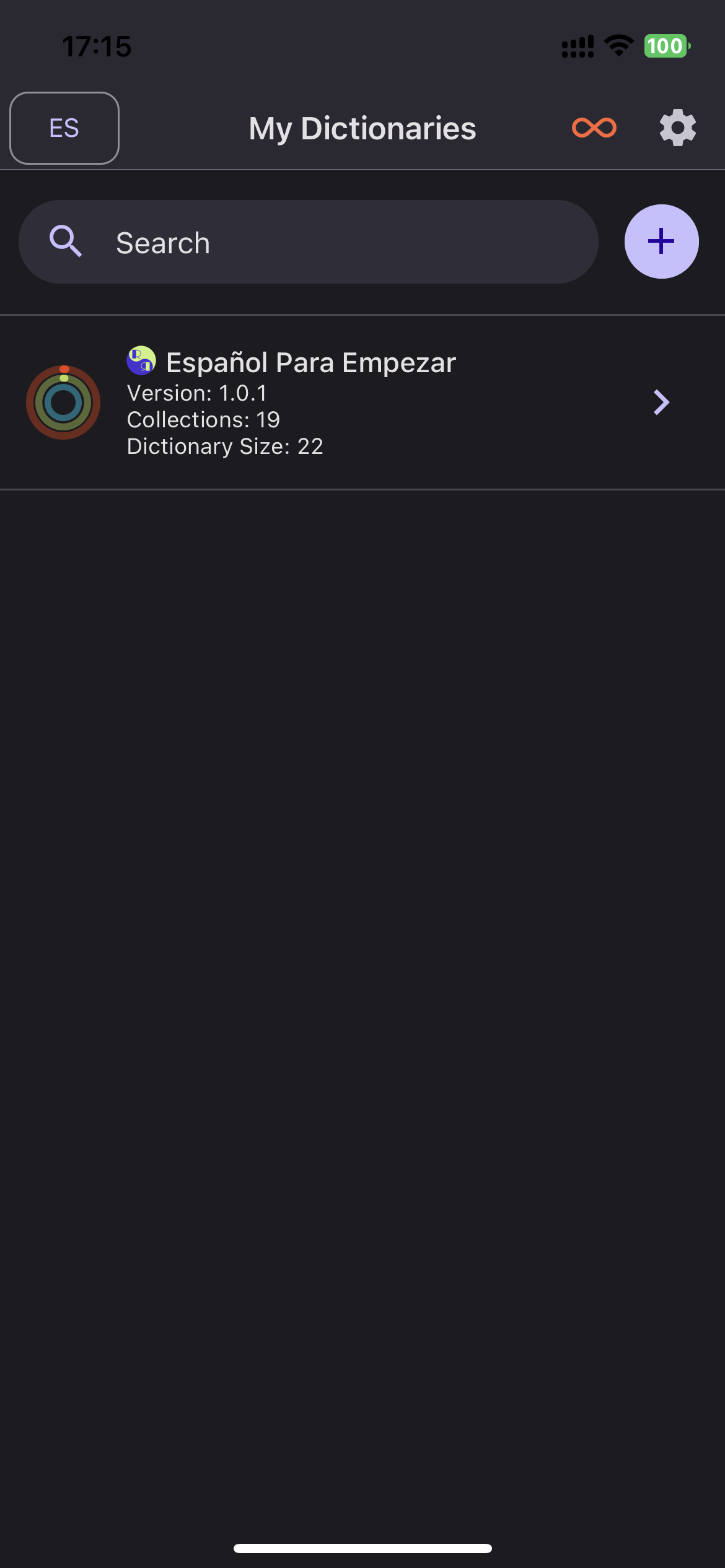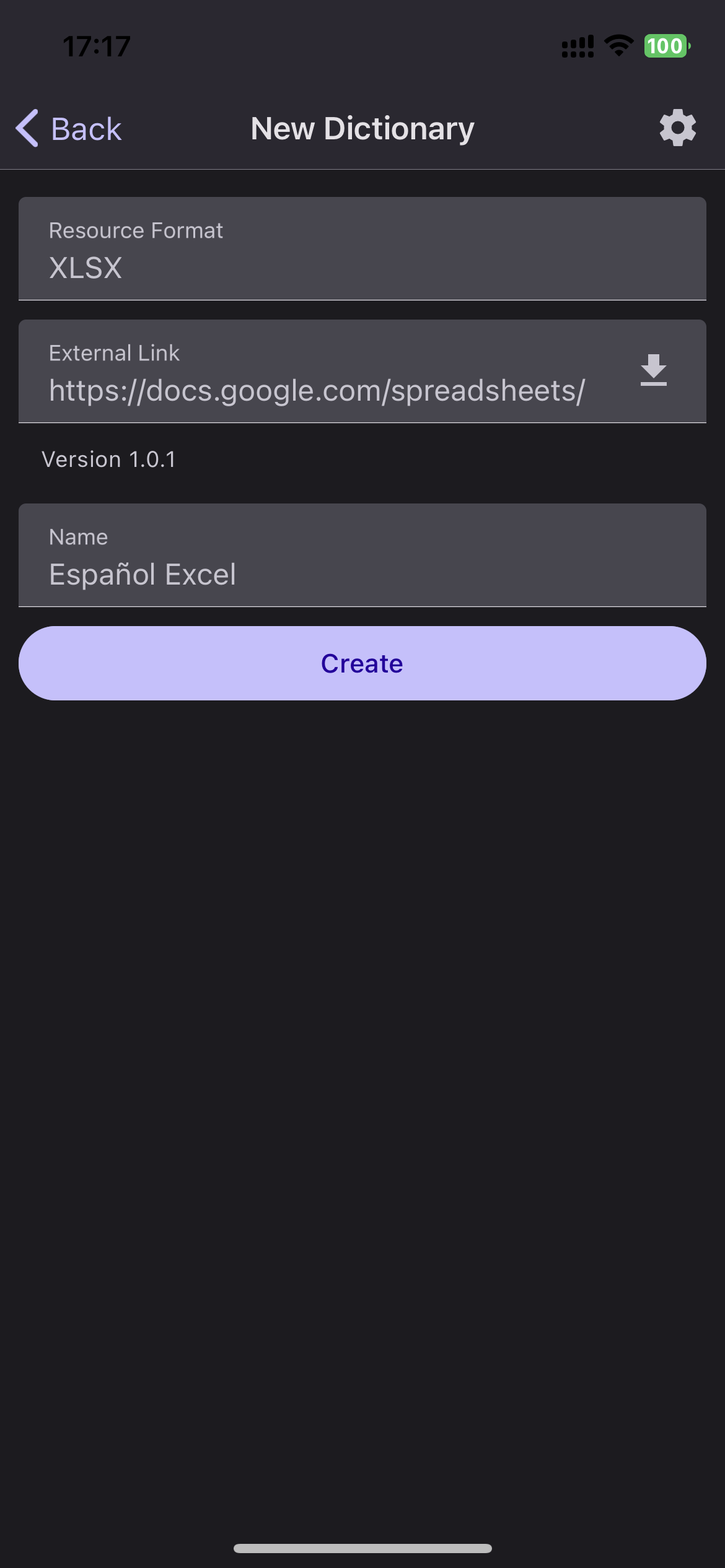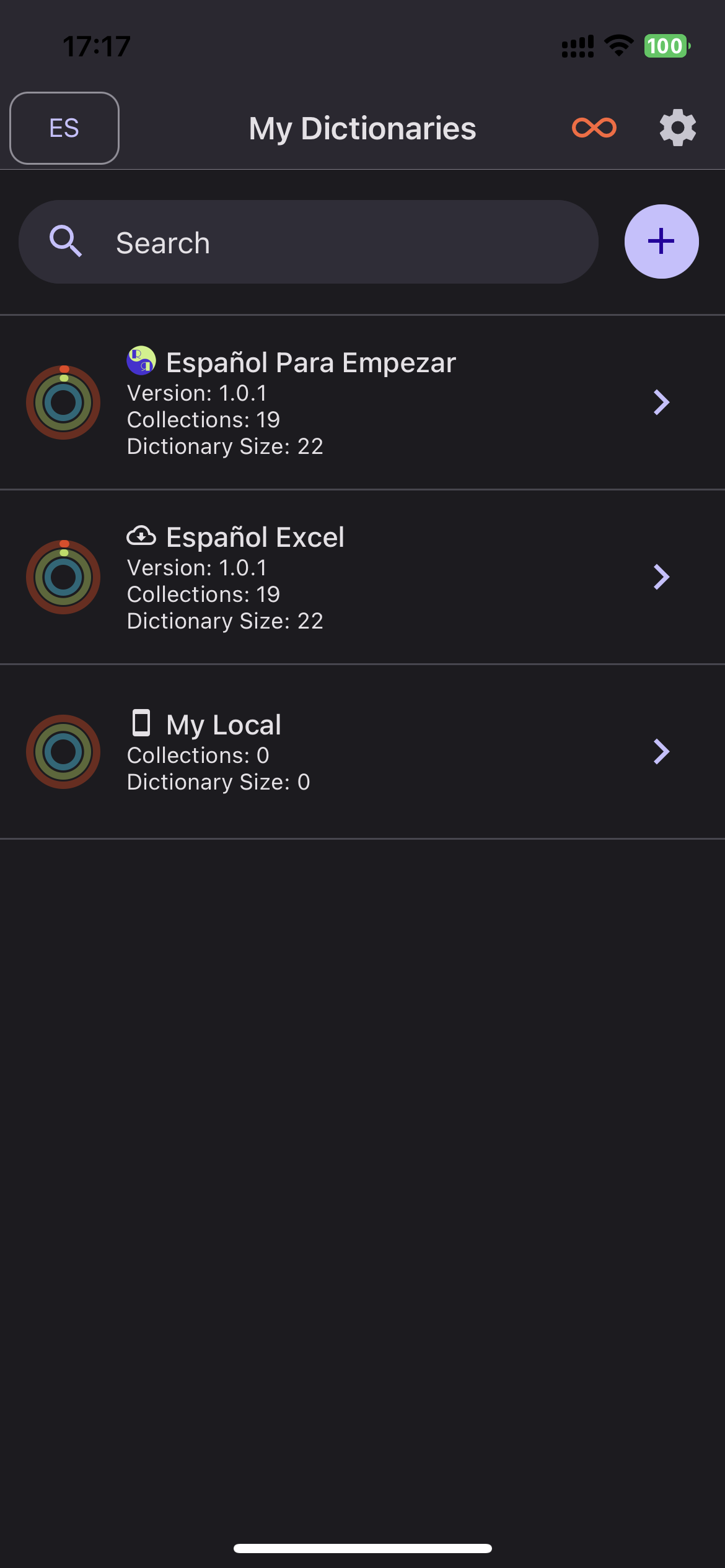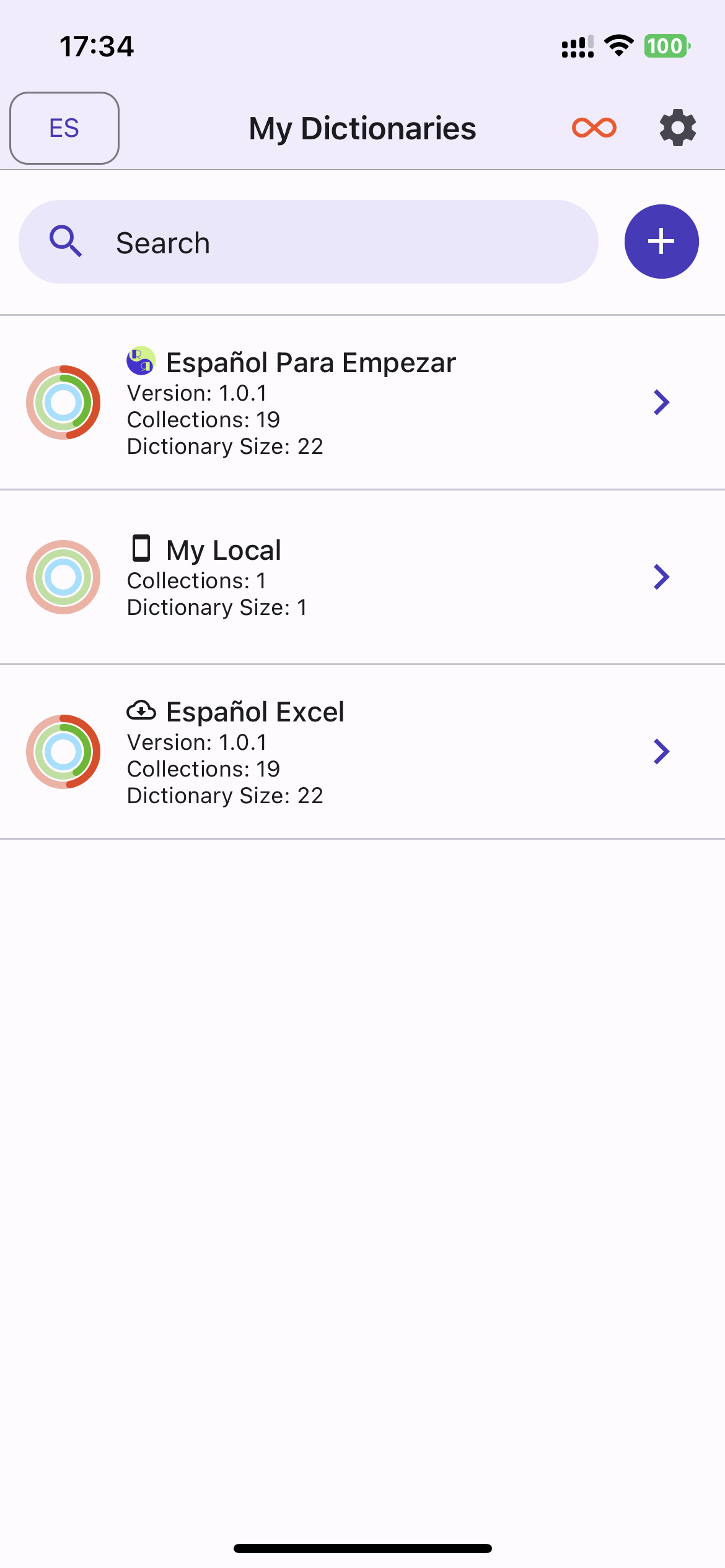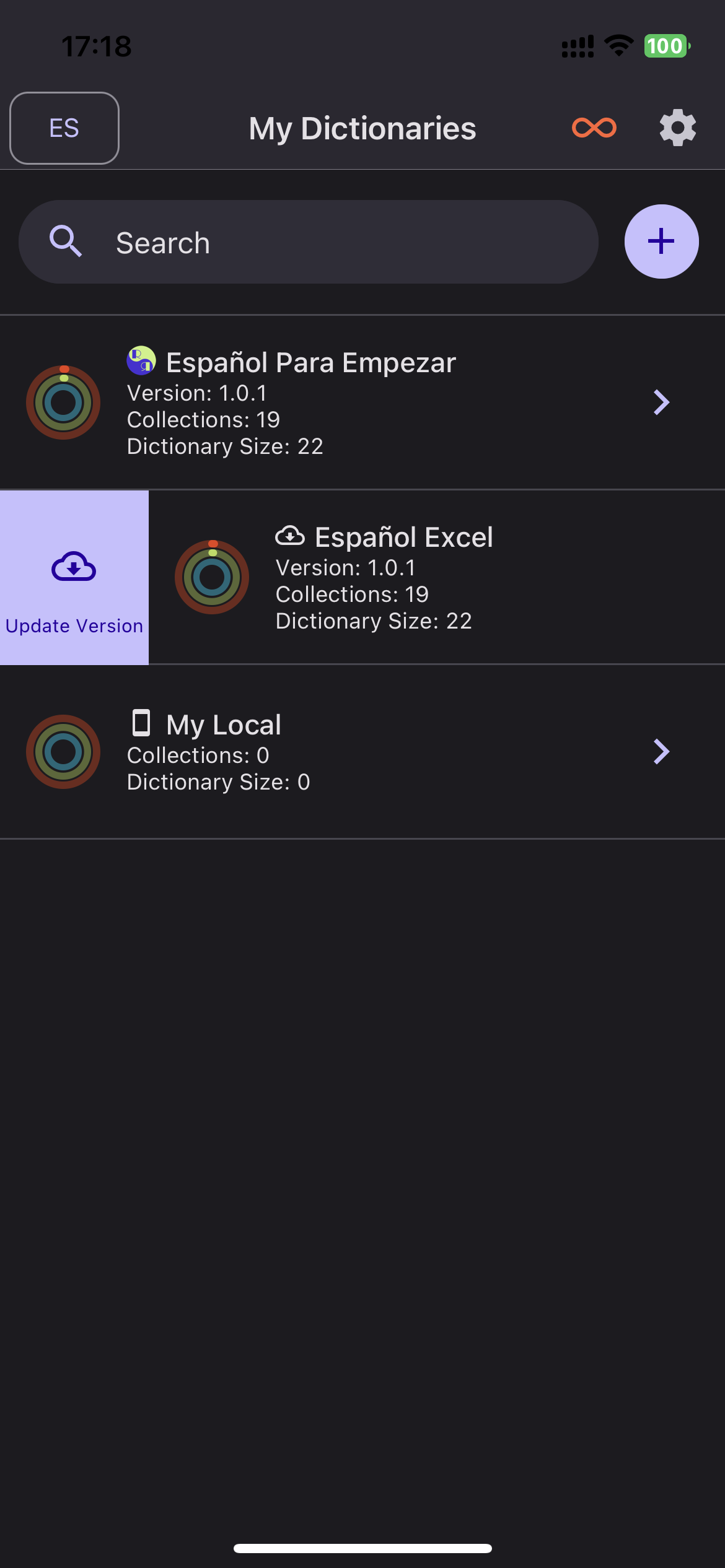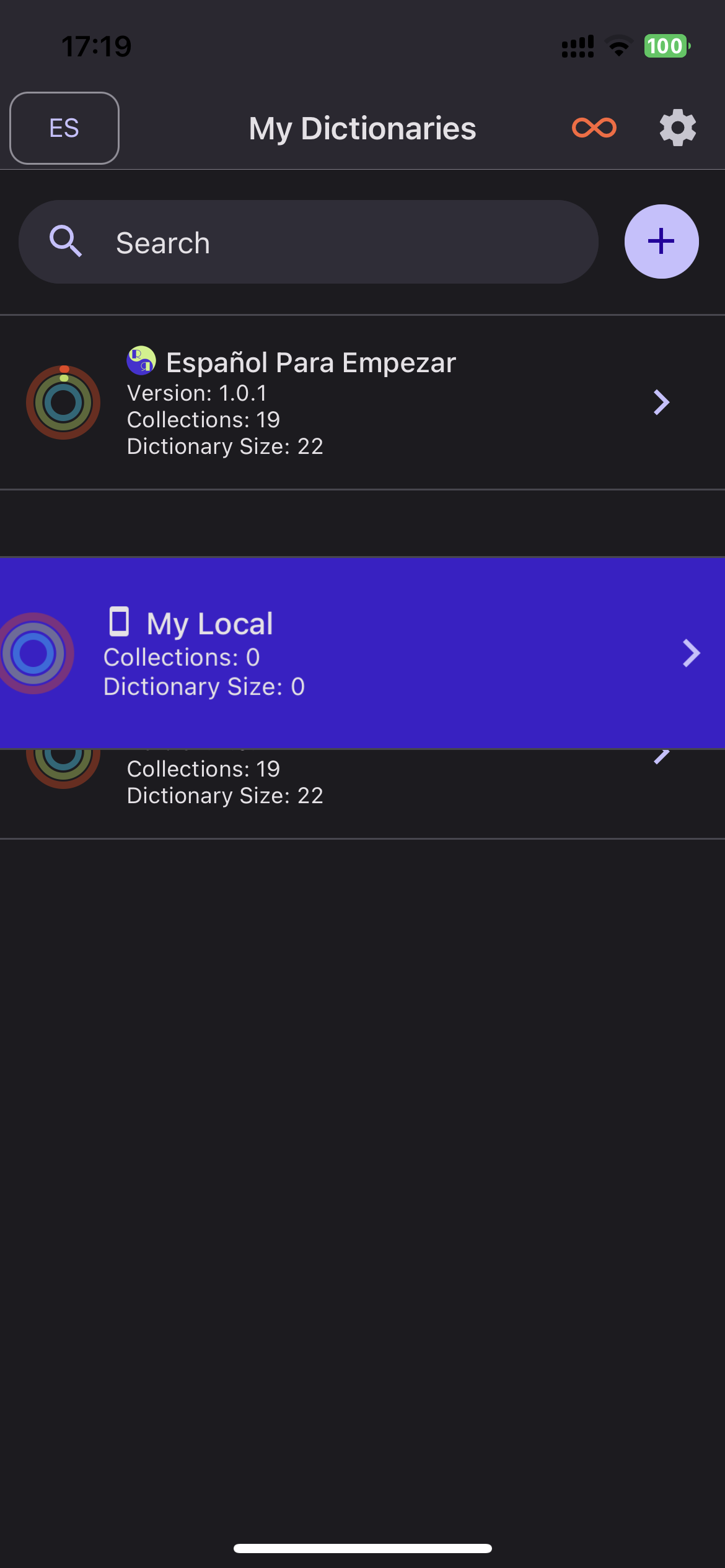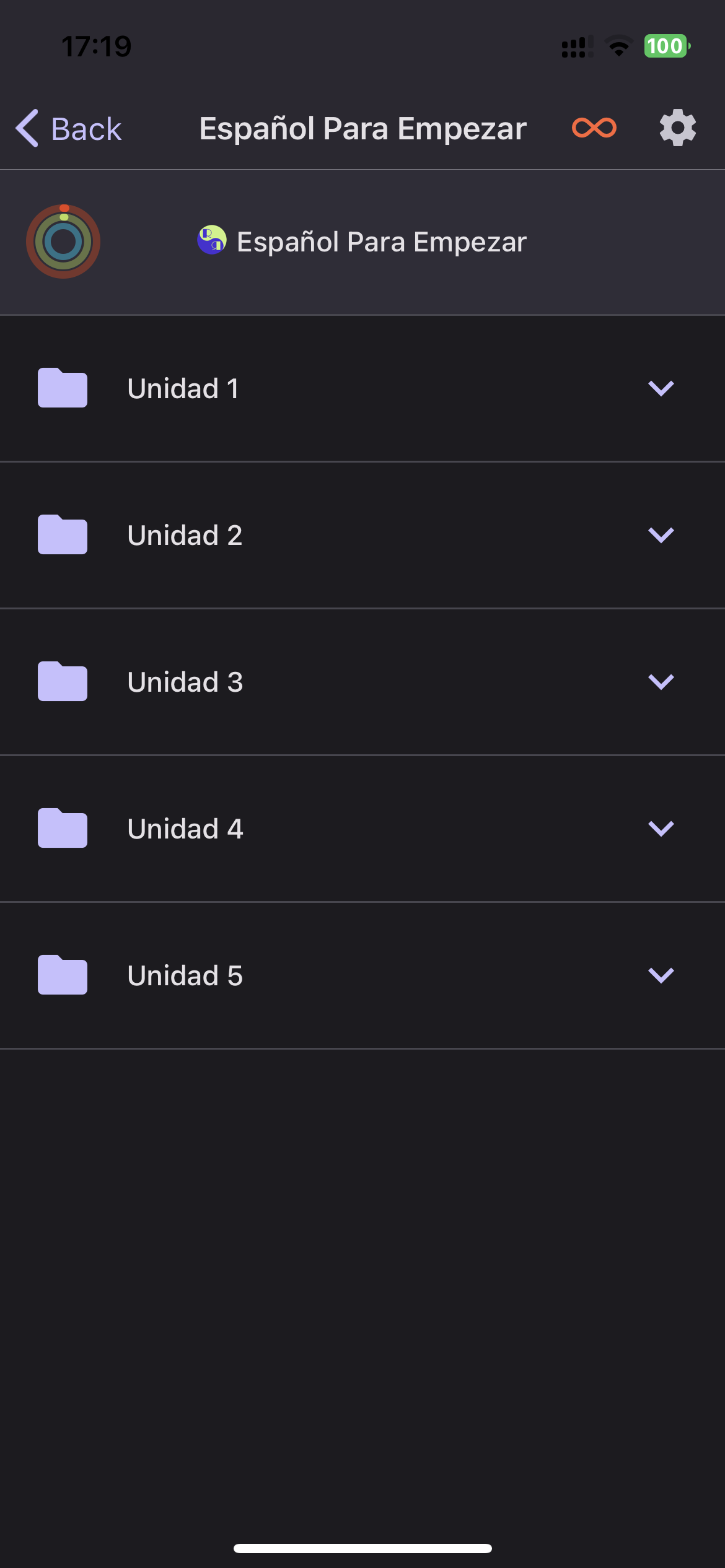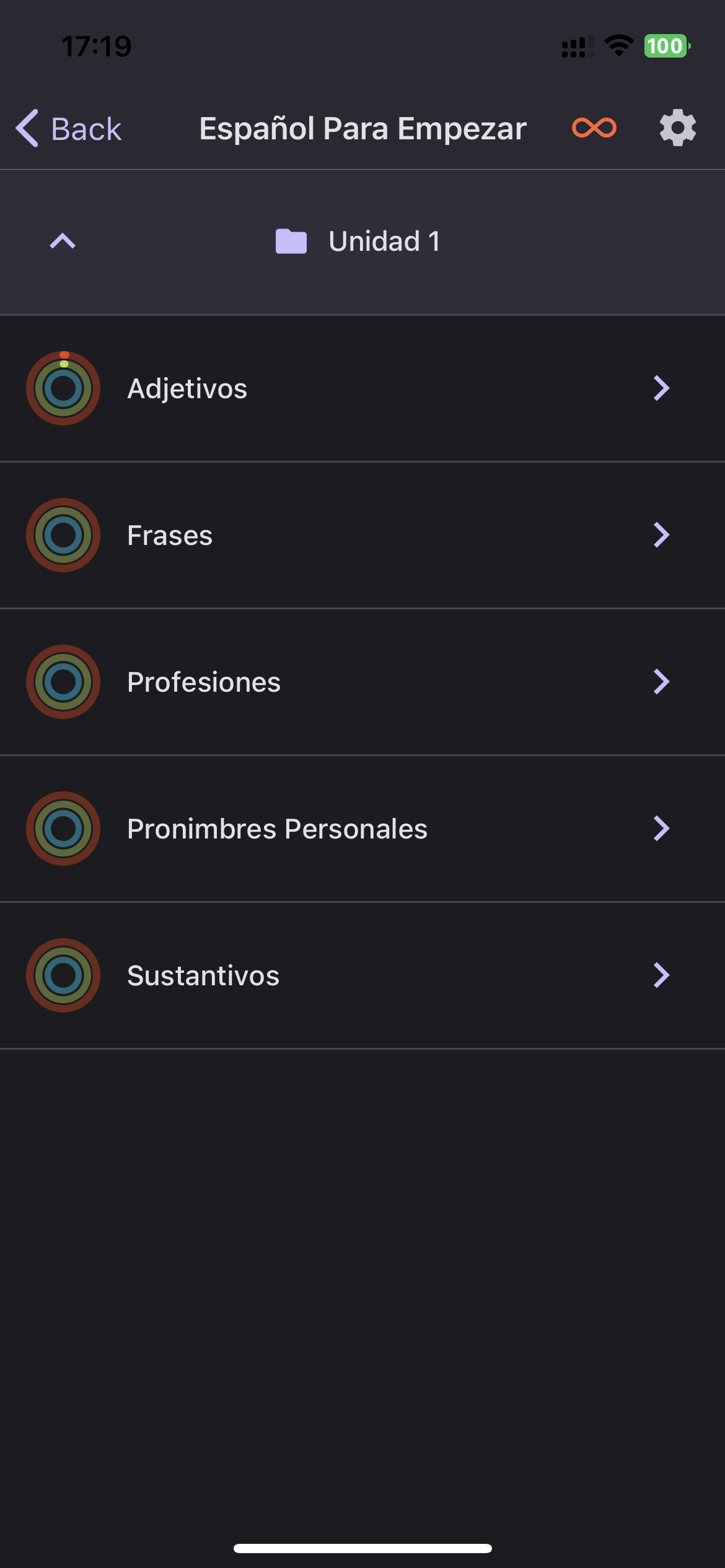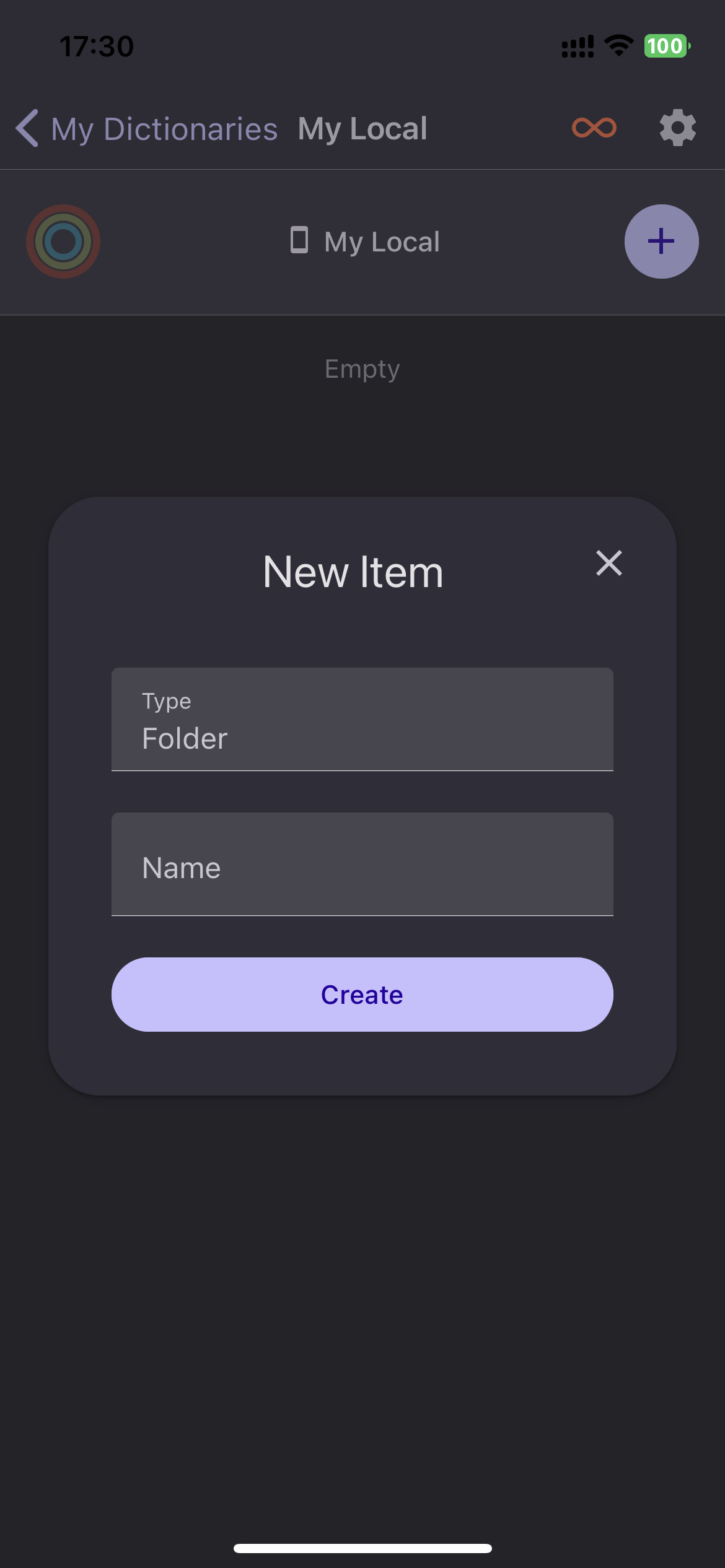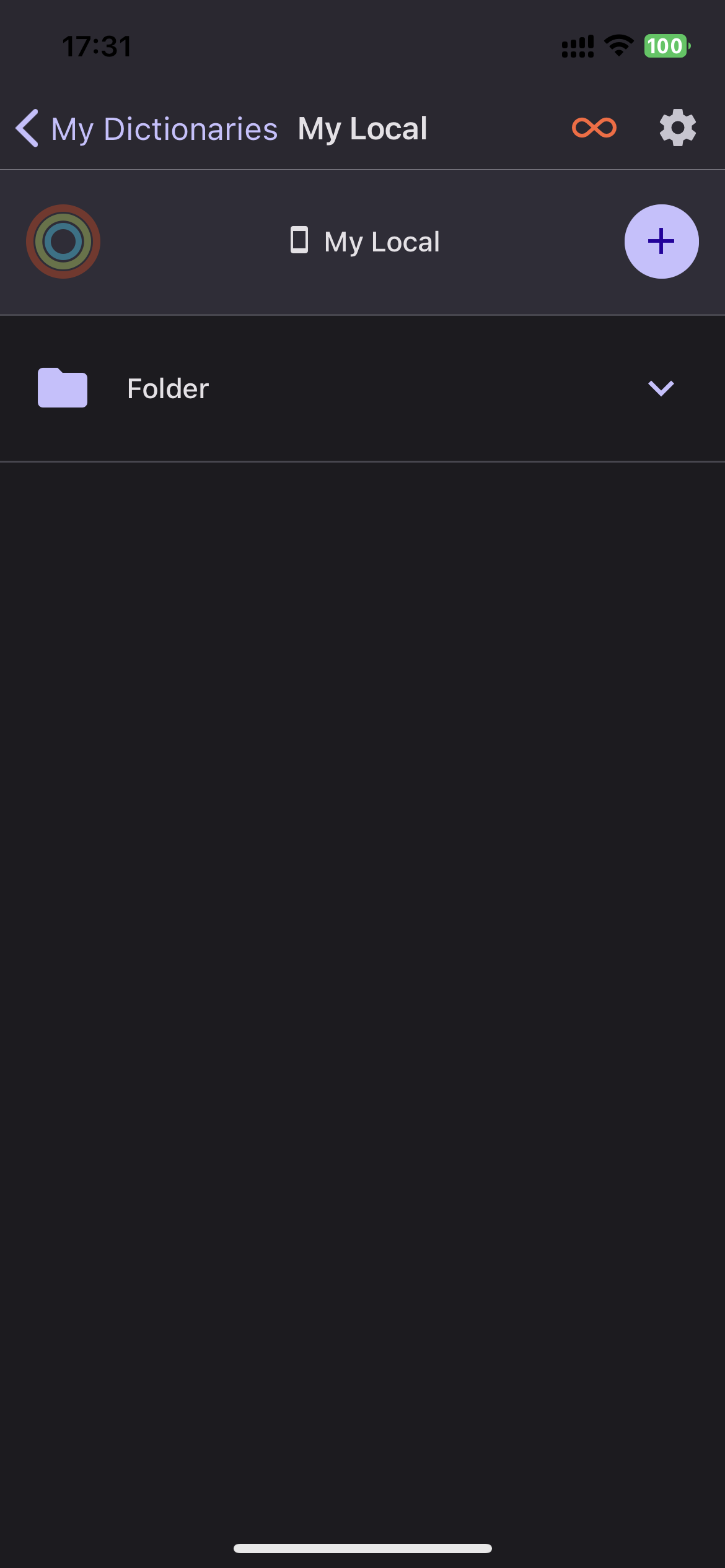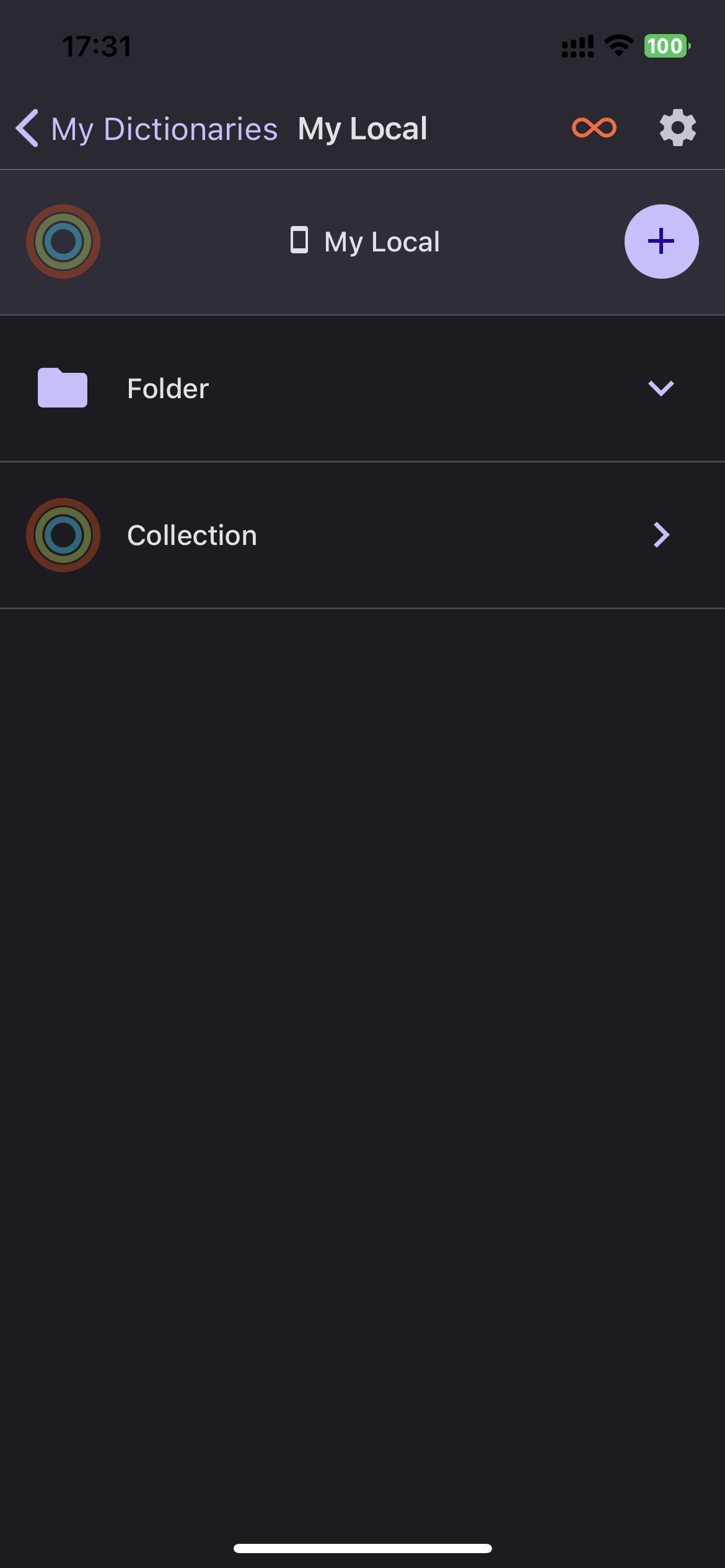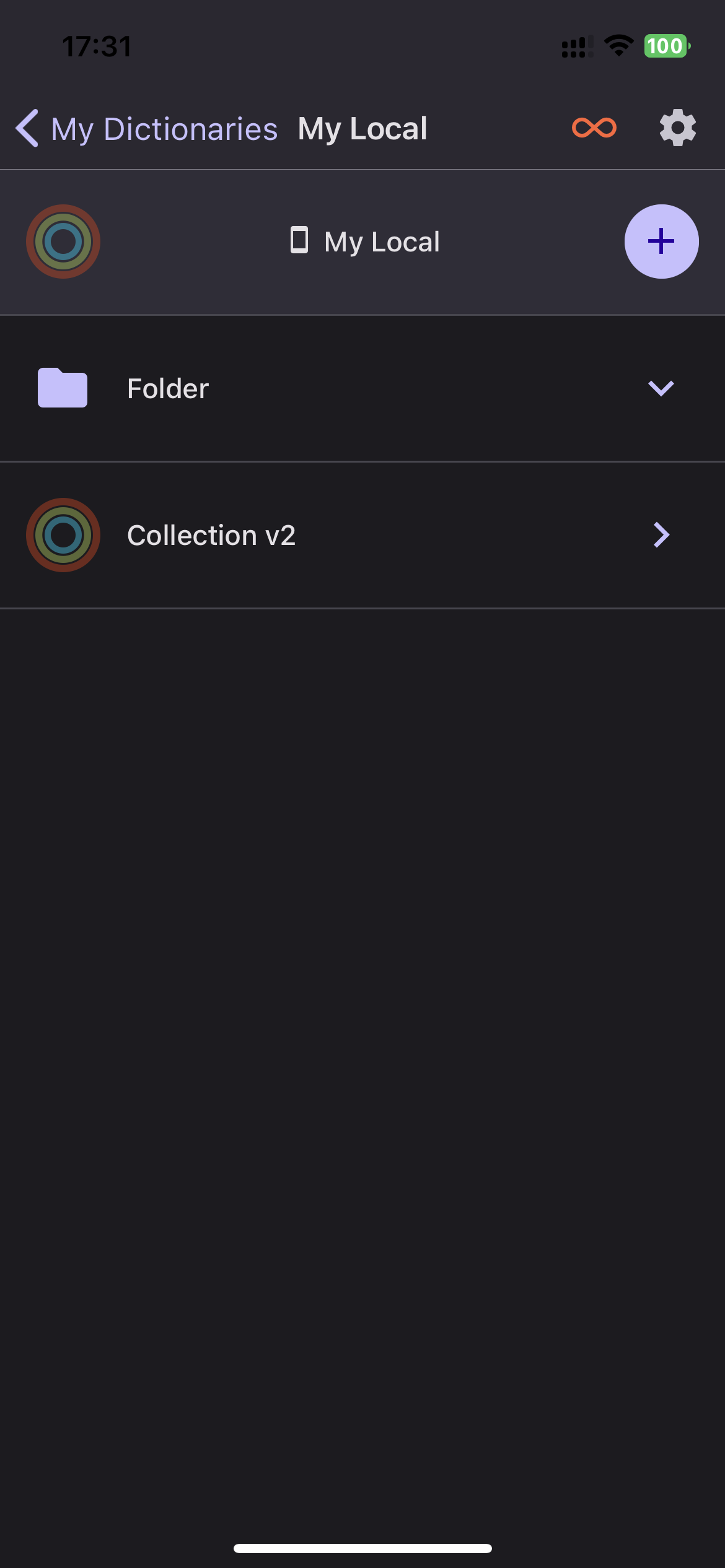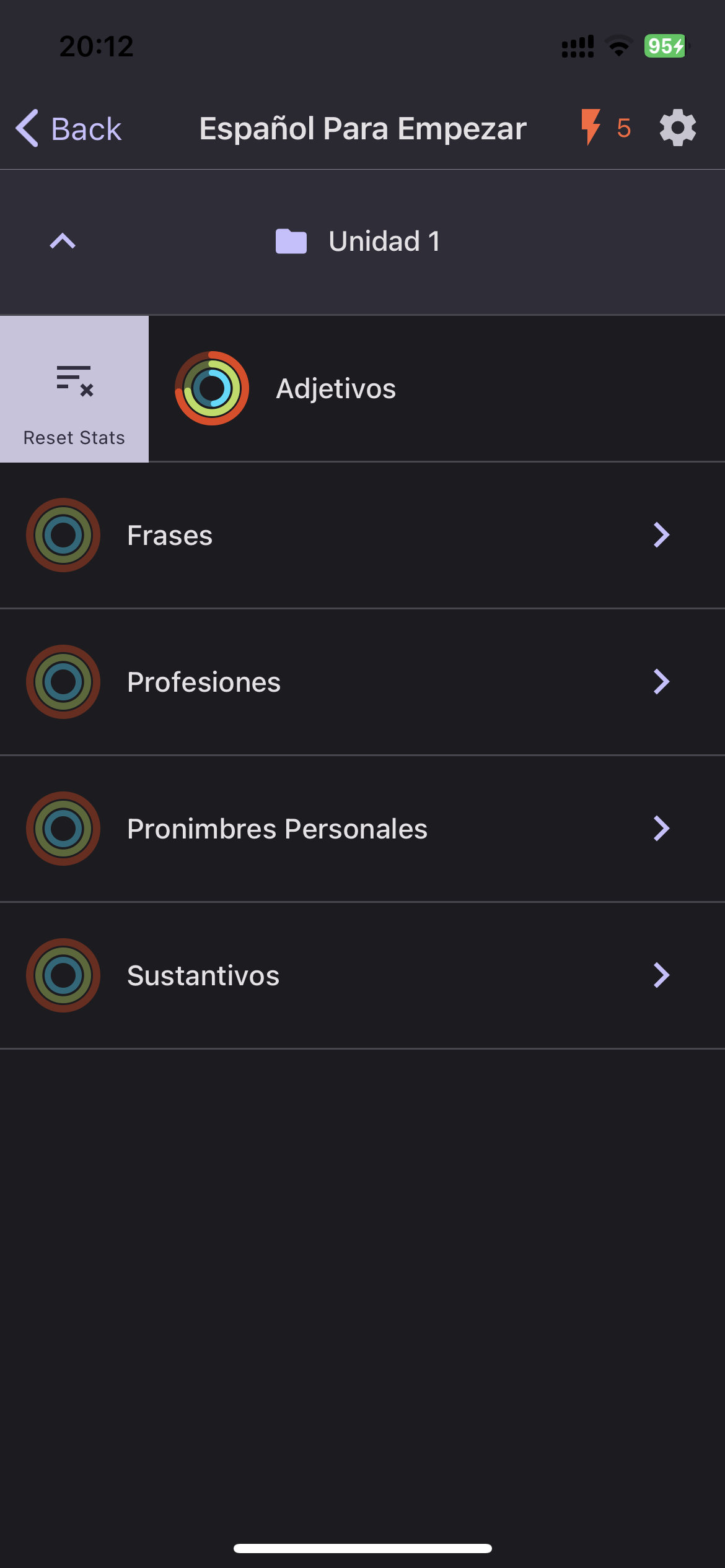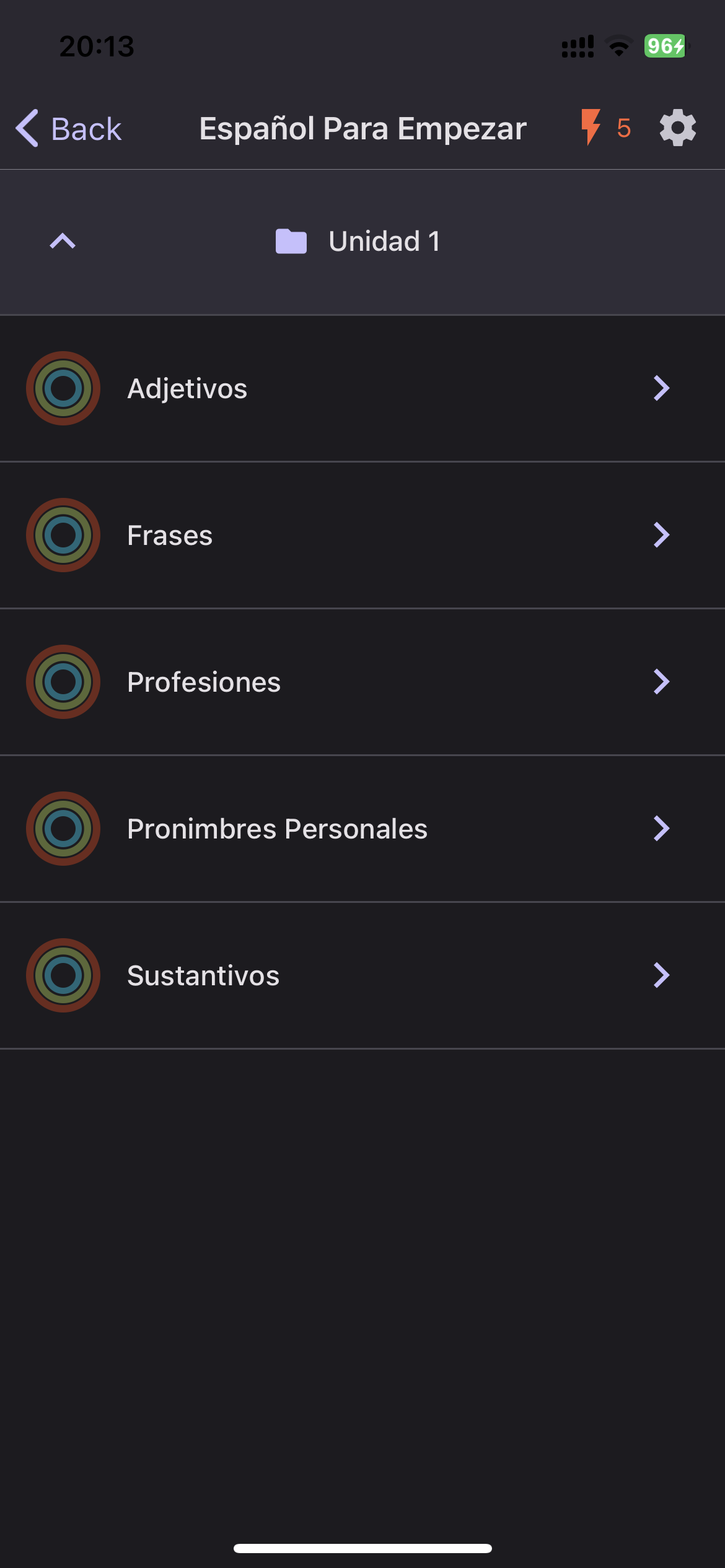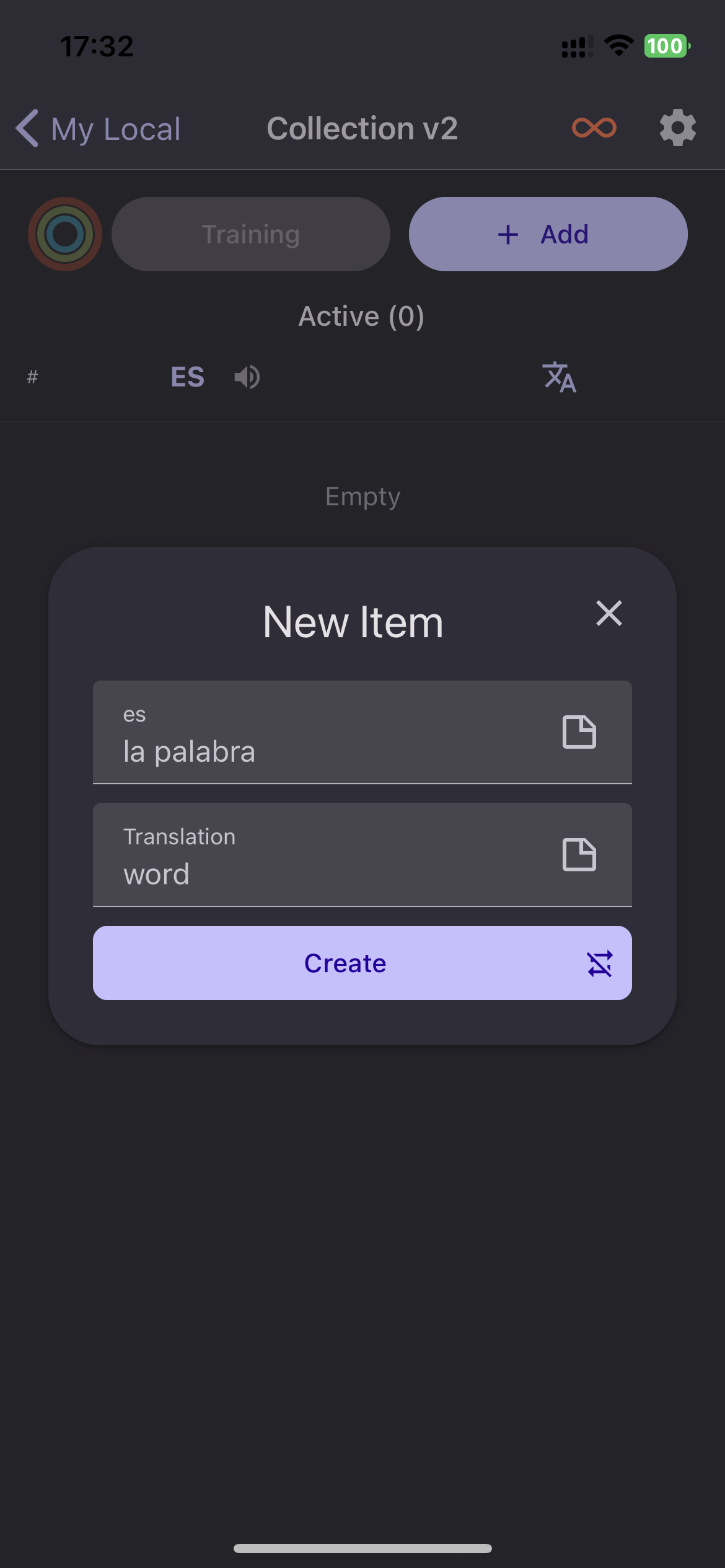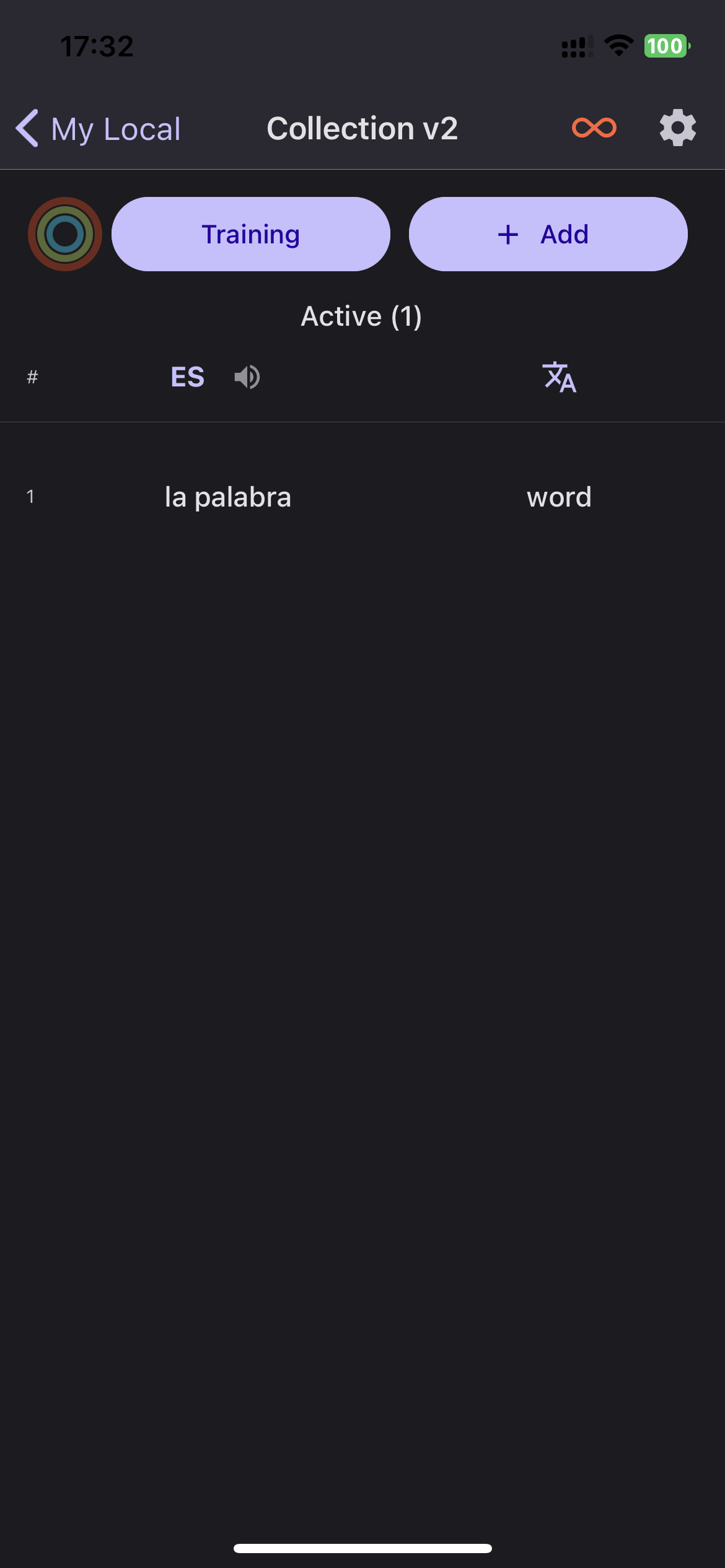In our team, we understand that the structure of your vocabulary plays a crucial role in your language learning journey. To make your learning experience as versatile and tailored as possible, LexiGym offers a flexible vocabulary structure that allows you to organize and access your dictionaries with ease.
Types of Dictionaries
LexiGym features three types of dictionaries, each with its own unique characteristics:
-
Web Dictionary: This type of dictionary is linked to an external resource, such as a Google
Sheet or a JSON API. You can create a web dictionary by providing a reference link to the external resource.
While the content of web dictionaries is not editable within the application, you can make changes to the
external resource directly and then load these changes into the application by swiping right to reveal and
clicking the 'Update Version' button. This operation doesn't affect your training statistics or history of
trainings for appropriate languages. Therefore, you can confidently make any changes to the dictionary and rest
assured that you won't lose your progress.
Want to create your own Google Sheet dictionary and load it into the app? Please use the following guides:
- Local Dictionary: You have the freedom to create and customize your own dictionaries within the app. The content of local dictionaries is fully editable, and you can add folders, collections, and new translations as needed.
- LexiGym Dictionary: The application offers dictionaries through its hub, eliminating the need for you to create your own. These dictionaries are created and provided by our team. If at least one LexiGym dictionary is available for your active language, you can load it directly from the hub. This option simplifies the dictionary creation process.
Flexible Dictionary Management
LexiGym offers users the flexibility to add as many dictionaries as they need. Dictionaries for the active language are now organized across multiple screens, simplifying dictionary management. You can start on the Dictionary List Screen, where you manage your dictionaries and view their statistics and details. When you select a specific dictionary, you can navigate the Dictionary Screen to edit its content and locate the right collection. You can also view the stats for each collection. If you're ready to begin training, head to the Collection Screen, where you can manage the selected collection and start your language learning journey.
Dictionary List Screen
Effortlessly explore, organize, and manage your language dictionaries in the Dictionary List Screen. Here, you can add new dictionaries, monitor your progress with informative progress rings, and keep your dictionaries up-to-date with ease. New dictionaries are added to the top of the list, maintaining a chronological order of addition.
Reordering dictionaries is simple. Just long-press on a dictionary, and you can move it to the desired position in the list. This allows you to prioritize and arrange your dictionaries based on your preferences.
LexiGym simplifies the dictionary experience by sharing word/phrase training stats across all dictionaries. This means that when a word or phrase is trained, it appears consistently across all dictionaries, eliminating redundancy.
The search functionality makes finding specific dictionaries a breeze, and you have the power to manage existing dictionaries by swiping left, which provides options for editing and deletion.
If you're using web dictionaries or LexiGym dictionaries, simply swipe to the right to access the "Update Version" button. This convenient feature ensures your dictionaries stay current by fetching the latest data from the external resources or LexiGym Dictionary Hub.
Discover an organized and efficient way to embark on your language learning journey, all from the Dictionary List Screen.
Dictionary View Screen
Explore the full potential of the selected dictionary within the Dictionary View Screen. Here, you can delve into the intricacies of the chosen dictionary, navigate through folders, and access collection statistics via visual progress rings.
For local dictionaries, customization options abound. You can create new collections and folders to meticulously structure your vocabulary according to your preferences.
When you click on a folder, the screen will open to reveal the folder's content and display the current active folder in the header. If you click on a collection, the application will seamlessly navigate you to the Collection View Screen.
Also you can conveniently reset training statistics for a specific collection by swiping right and clicking the "Reset Stats" button.
Collection View Screen
Collection View is where you, as a language learner, can dive into the individual word/phrase items for a more focused learning experience. Here's what you'll find in the Collection View:
- Audio Playback: You can click on each item to play audio of the learning item if voice settings are available for the active language.
- Skip/Unskip: You have the option to skip or unskip collection items. If an item is swiped to the right, the appropriate buttons allow for skipping the item. Skipped items are excluded from trainings and do not affect training stats or progress. This feature allows you to skip words or phrases you already know or don't wish to include in your training sessions.
- Local Dictionary Editing: For local dictionaries, you can add new items via the "Add" button and edit or delete items by swiping the item to the left and selecting the appropriate button.
With this versatile and user-friendly vocabulary structure, LexiGym empowers language learners to customize and access their dictionaries effortlessly. Whether you prefer web dictionaries, local dictionaries, or LexiGym dictionaries, our platform provides the tools and flexibility you need to enhance your language learning journey.
Start organizing your vocabulary, exploring new collections, and accelerating your language learning with LexiGym today.
